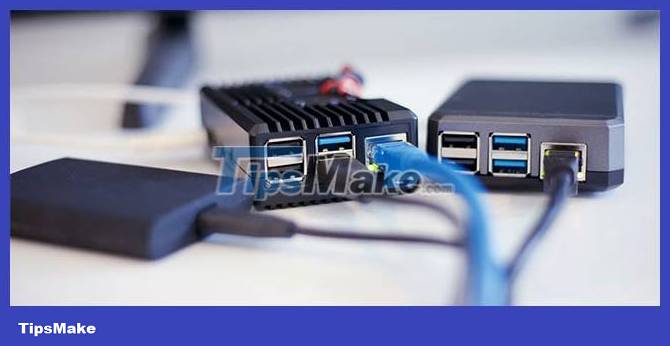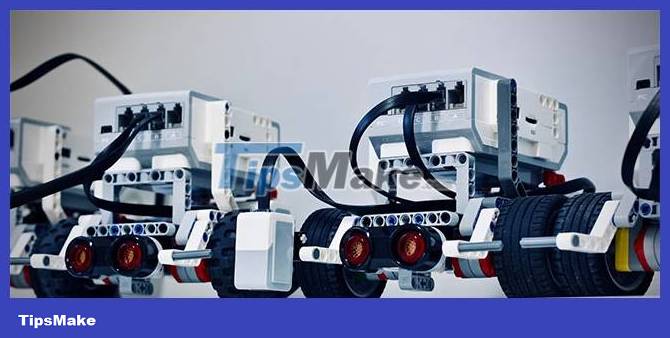How to use Ubuntu Core on Raspberry Pi
Ubuntu is a popular Linux distribution that offers stability, multiple versions with a graphical interface, and a community of enthusiasts that help support each other. If you strip away all the advanced features from Ubuntu, what's left is Ubuntu Core.
This is an operating system that even the Raspberry Pi 2 can run, not to mention later models like the Pi 3 and 4. Putting these two familiar names together will give you a good result. stable, regularly maintained and supported for years to come.
Let's dive into the possibilities that Ubuntu Core and Raspberry Pi can bring together.
Requirements & Settings
The following hardware will help you get started with Ubuntu Core:
- Raspberry Pi 2, 3, 4, 400, Zero 2 W or Compute Module 4
- 4GB+ microSD card and reader
- WiFi network or Internet connection
- The screen has an HDMI interface
- One HDMI cable
- USB keyboard
Once you have the necessary hardware, you will need to install Ubuntu Core on your Raspberry Pi. You can also download the Ubuntu Core image and use the Raspberry Pi Imager tool to install it. During the installation process, you will want to make sure that SSH is enabled so that you can access via SSH to your Raspberry Pi when required.
Real-life use cases for Ubuntu Core
There are many reasons why you might want to use Ubuntu Core instead of the standard Raspberry Pi OS.
IoT & application development

Up to 10 years of support (with regular security updates and patches) ensures peace of mind for smart applications on your Raspberry Pi. Each IoT device has its own cloud platform to host and manage its own IoT app store. This will allow you to build your own ecosystem and manage your monetization strategies as you see fit.
When you need to perform bug fixes, Ubuntu Core enables remote management to minimize downtime. If you're new to the idea of cloud-based devices, explore the world of the Internet of Things (IoT) for details.
Snap creates an easy way for developers to simultaneously deploy applications to multiple Linux distributions. Additionally, Snap packages use a container system that allows applications to use hardware specific to its needs. Snapcraft (Snap) has advantages and disadvantages that you should review before starting to develop for the snap ecosystem.
Media server

For enthusiasts, Ubuntu Core and Raspberry Pi are the perfect pair to deploy servers used to store and share important files, stream video and audio content, and system security.
A network-attached storage system will allow you to store important files on your Raspberry Pi and share them between computers on your home network. Samba is an application that comes with Ubuntu Core.
Creating a media server is another great option you can run on your Raspberry Pi. Instead of just being able to install Plex Server itself as an image, you can install your Plex Server in a Docker container. Once your Plex Server is installed, you will be able to access Plex via the address [Raspberry Pi IP]:32400 (unless you have modified the default port in the server setup).
Containers & web servers

When you're looking for a secure space for your next project (or media server), Docker containers are a great way to ensure that your system isn't affected by a newly installed application. in the environment contained in this container. Installing Docker on Linux is simple. If you want a web user interface, you can also install Portainer on Linux.
Another web UI, Cockpit, is a great way to manage your Ubuntu Core system from another browser on your home network. While SSH is a popular method for remotely accessing a non-graphical system, it's nice to have a web-based interface to help you monitor remote computer activity.
Machine learning

Mahcine learning models often have specific requirements. A scaled-down version of Kubernetes, MicroK8s, provides a solution to this need. MicroK8s is ideal when you suddenly need to provide a service to many people (e.g. ChatGPT chatbot).
You can eliminate cluster administration with MicroK8 and run your machine learning efforts in a cluster with high efficiency. MicroK8 can be installed locally using Snap and will allow your installed machine learning container(s) to run natively. This makes development, including GPU-accelerated projects, much easier to do in the pre-production stages.
Docker is a familiar name in the container world; however, Docker is more suitable for container runtime (running applications). While the Kubernetes (MicroK8s) ecosystem may be more complicated to initially set up, in the long run you will enjoy the ability to scale and reduce unnecessary administrative tasks.
Additionally, the MicroK8 container can be set up in less than 60 seconds. While many professionals will use this solution, this is also useful for developers who want to develop locally.
You should read it
- How to install Windows 10 IoT Core on Raspberry Pi 3
- How to install Windows 10 IoT Core on Raspberry Pi 4
- Raspberry Pi 4 officially launched, quad-core Cortex-A72 1.5 GHz, maximum RAM of 4GB
- Raspberry Pi 3 Model A +: 8-core chip, clocked at 1.4GHz, priced at $ 25
- What is the difference between Ubuntu Desktop and Ubuntu Server?
- 10 operating systems you can run with Raspberry Pi
 How to create a new user in Raspberry Pi OS
How to create a new user in Raspberry Pi OS 8 things to avoid to not damage your Raspberry Pi
8 things to avoid to not damage your Raspberry Pi Difference between Elegoo and Arduino
Difference between Elegoo and Arduino 4 reasons to buy an old Raspberry Pi model
4 reasons to buy an old Raspberry Pi model Why is the new Arduino Uno R4 a game changer for manufacturers?
Why is the new Arduino Uno R4 a game changer for manufacturers? How to use the advanced options of Raspberry Pi Imager
How to use the advanced options of Raspberry Pi Imager